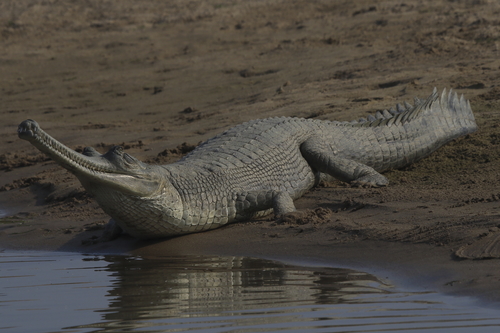
Gharial
Gharials sport elongated, toothy snouts perfect for fishing in Indian rivers. These critically endangered crocodilians are vital for aquatic ecosystems, controlling fish populations and promoting biodiversity. With their unique appearance and vital ecological role, gharials capture both the eye and the imagination.
30-50 years
Lifespan
150.0 - 250.0 kg
Weight
Length: 3.6 - 6.5 m
Size
Grey, Olive
Color
10 years
Age of Sexual Maturity
15 mph
Top Speed
Critically Endangered
Conservation Status
Increasing
Population Trend
Characteristics
The Gavialis gangeticus, commonly known as the gharial, is a distinctive crocodilian with a long, narrow snout adapted for catching fish. It inhabits the riverine ecosystems of the Indian subcontinent. Gharials are critically endangered, playing a crucial role in maintaining healthy fish populations and aquatic ecosystems.
Distribution Range of the Gharial
The Gavialis gangeticus, commonly known as the gharial, is native to the northern part of the Indian subcontinent. Its geographical distribution includes the river systems of India and Nepal, particularly the Ganges, Brahmaputra, Mahanadi, and other rivers in the Gangetic basin.
Gharial's Habitat
Environmental Conditions
Gharials inhabit freshwater river systems with deep, fast-moving waters. They prefer areas with sandy banks and shallow water habitats which are ideal for nesting and basking. The climate in these regions is typically tropical and subtropical, with a distinct monsoon season.
Ecological Niche
Gharials are highly adapted aquatic reptiles, primarily occupying the ecological niche of a fish-eating crocodilian. Their elongated, narrow snouts are specialized for catching fish, which constitute the majority of their diet. They play a critical role in maintaining the aquatic ecosystem's health by controlling fish populations.
Copyright @ Nature Style Limited. All Rights Reserved.
 English
English